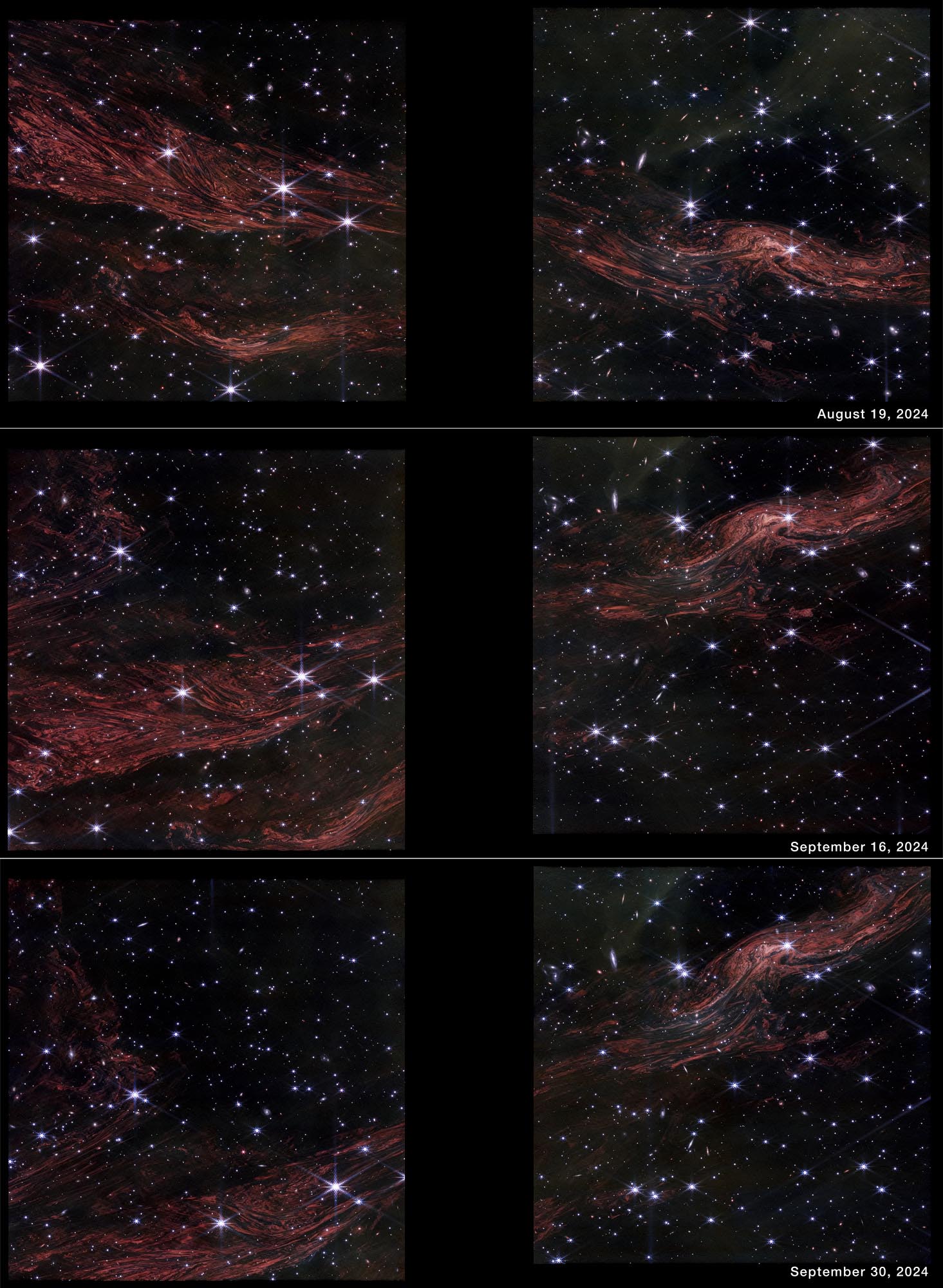NASA’s Webb Reveals Intricate Layers of Interstellar Dust, Gas

Once upon a time, the core of a massive star collapsed, creating a shockwave that blasted outward, ripping the star apart as it went. When the shockwave reached the star’s surface, it punched through, generating a brief, intense pulse of X-rays and ultraviolet light that traveled outward into the surrounding space. About 350 years later, that pulse of light has reached interstellar material, illuminating it, warming it, and causing it to glow in infrared light.
NASA’s James Webb Space Telescope has observed that infrared glow, revealing fine details resembling the knots and whorls of wood grain. These observations are allowing astronomers to map the true 3D structure of this interstellar dust and gas (known as the interstellar medium) for the first time.
“We were pretty shocked to see this level of detail,” said Jacob Jencson of Caltech/IPAC in Pasadena, principal investigator of the science program.
“We see layers like an onion,” added Josh Peek of the Space Telescope Science Institute in Baltimore, a member of the science team. “We think every dense, dusty region that we see, and most of the ones we don’t see, look like this on the inside. We just have never been able to look inside them before.”
The team is presenting their findings in a press conference at the 245th meeting of the American Astronomical Society in National Harbor, Maryland.
“Even as a star dies, its light endures—echoing across the cosmos. It’s been an extraordinary three years since we launched NASA’s James Webb Space Telescope. Every image, every discovery, shows a portrait not only of the majesty of the universe but the power of the NASA team and the promise of international partnerships. This groundbreaking mission, NASA’s largest international space science collaboration, is a true testament to NASA’s ingenuity, teamwork, and pursuit of excellence,” said NASA Administrator Bill Nelson. “What a privilege it has been to oversee this monumental effort, shaped by the tireless dedication of thousands of scientists and engineers around the globe. This latest image beautifully captures the lasting legacy of Webb—a keyhole into the past and a mission that will inspire generations to come.”
Taking a CT Scan
The images from Webb’s NIRCam (Near-Infrared Camera) highlight a phenomenon known as a light echo. A light echo is created when a star explodes or erupts, flashing light into surrounding clumps of dust and causing them to shine in an ever-expanding pattern. Light echoes at visible wavelengths (such as those seen around the star V838 Monocerotis) are due to light reflecting off of interstellar material. In contrast, light echoes at infrared wavelengths are caused when the dust is warmed by energetic radiation and then glows.
The researchers targeted a light echo that had previously been observed by NASA’s retired Spitzer Space Telescope. It is one of dozens of light echoes seen near the Cassiopeia A supernova remnant – the remains of the star that exploded. The light echo is coming from unrelated material that is behind Cassiopeia A, not material that was ejected when the star exploded.
The most obvious features in the Webb images are tightly packed sheets. These filaments show structures on remarkably small scales of about 400 astronomical units, or less than one-hundredth of a light-year. (An astronomical unit, or AU, is the average Earth-Sun distance. Neptune’s orbit is 60 AU in diameter.)
“We did not know that the interstellar medium had structures on that small of a scale, let alone that it was sheet-like,” said Peek.
These sheet-like structures may be influenced by interstellar magnetic fields. The images also show dense, tightly wound regions that resemble knots in wood grain. These may represent magnetic “islands” embedded within the more streamlined magnetic fields that suffuse the interstellar medium.
“This is the astronomical equivalent of a medical CT scan,” explained Armin Rest of the Space Telescope Science Institute, a member of the science team. “We have three slices taken at three different times, which will allow us to study the true 3D structure. It will completely change the way we study the interstellar medium.”
